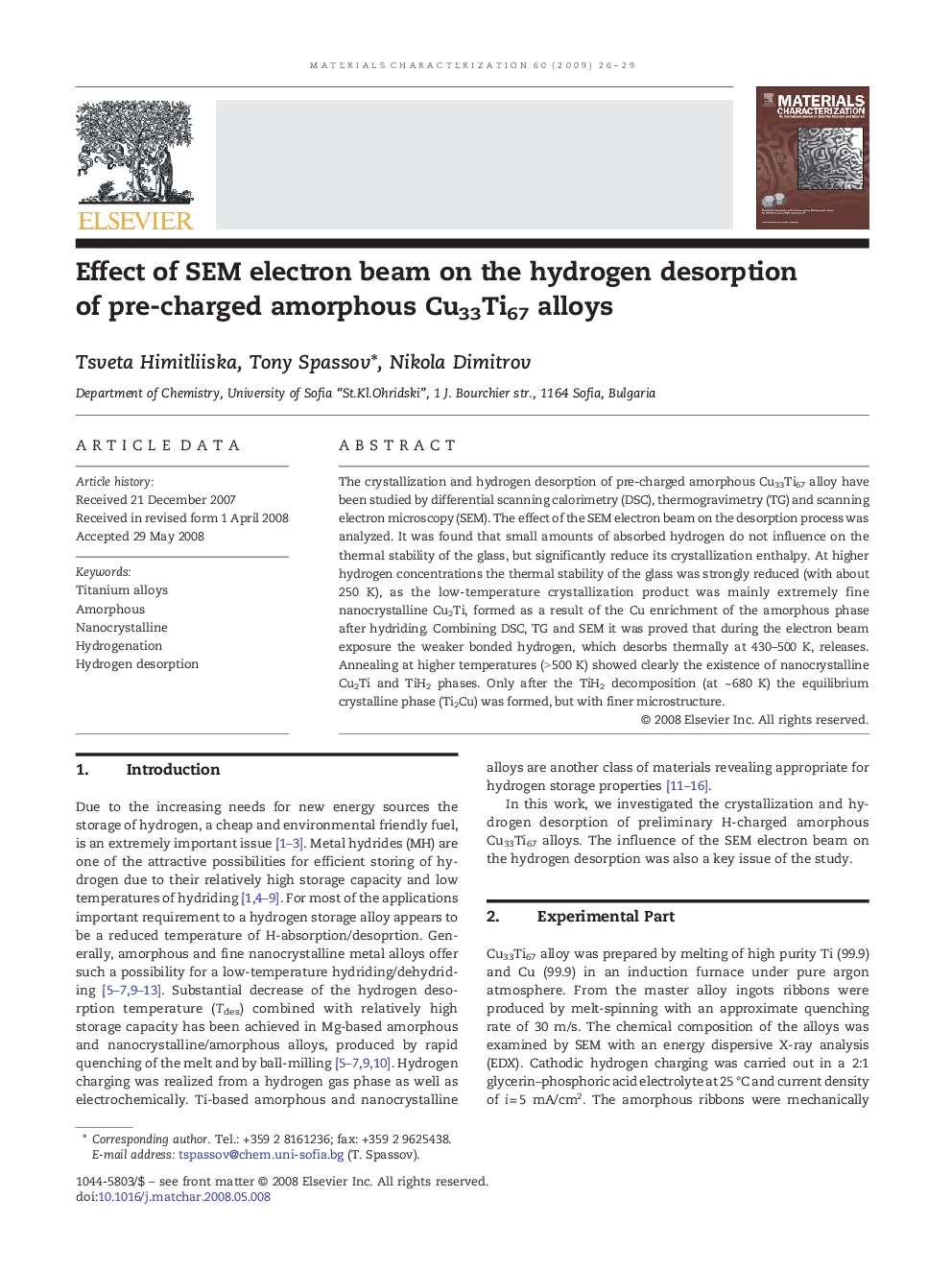| Article ID | Journal | Published Year | Pages | File Type |
|---|---|---|---|---|
| 1572233 | Materials Characterization | 2009 | 4 Pages |
The crystallization and hydrogen desorption of pre-charged amorphous Cu33Ti67 alloy have been studied by differential scanning calorimetry (DSC), thermogravimetry (TG) and scanning electron microscopy (SEM). The effect of the SEM electron beam on the desorption process was analyzed. It was found that small amounts of absorbed hydrogen do not influence on the thermal stability of the glass, but significantly reduce its crystallization enthalpy. At higher hydrogen concentrations the thermal stability of the glass was strongly reduced (with about 250 K), as the low-temperature crystallization product was mainly extremely fine nanocrystalline Cu2Ti, formed as a result of the Cu enrichment of the amorphous phase after hydriding. Combining DSC, TG and SEM it was proved that during the electron beam exposure the weaker bonded hydrogen, which desorbs thermally at 430–500 K, releases. Annealing at higher temperatures (> 500 K) showed clearly the existence of nanocrystalline Cu2Ti and TiH2 phases. Only after the TiH2 decomposition (at ~ 680 K) the equilibrium crystalline phase (Ti2Cu) was formed, but with finer microstructure.
